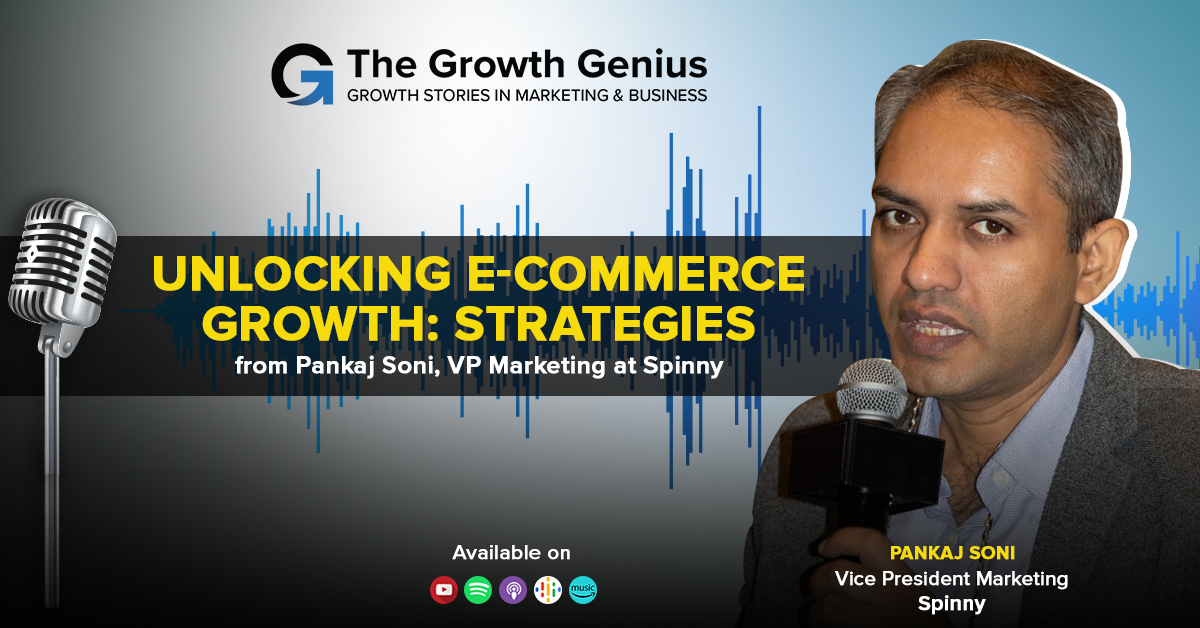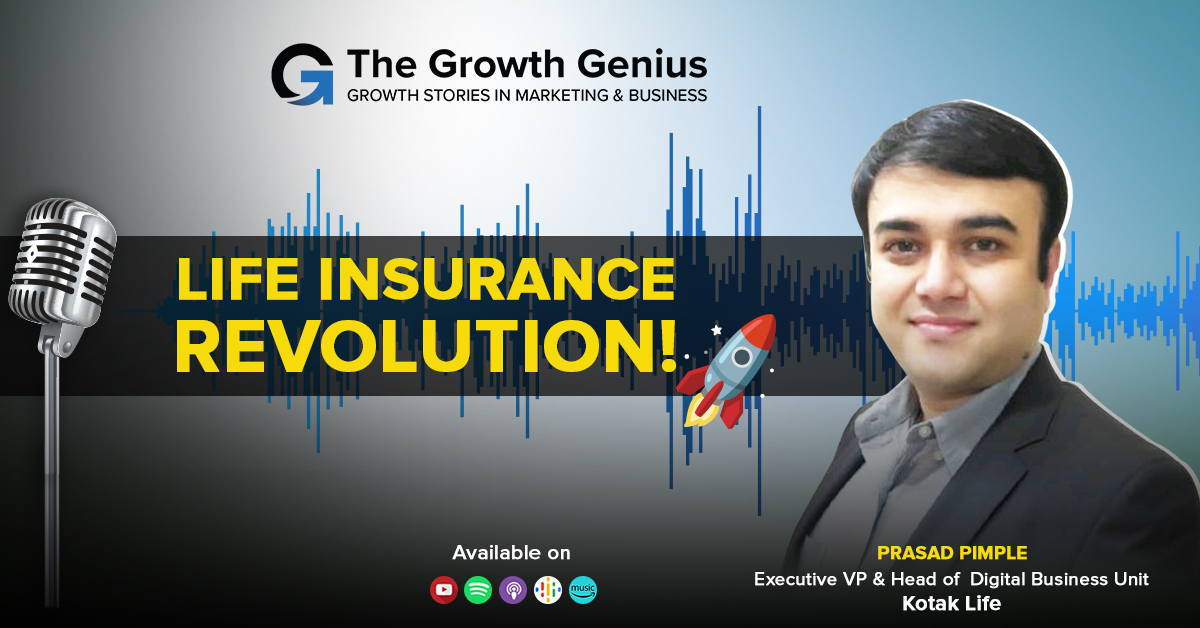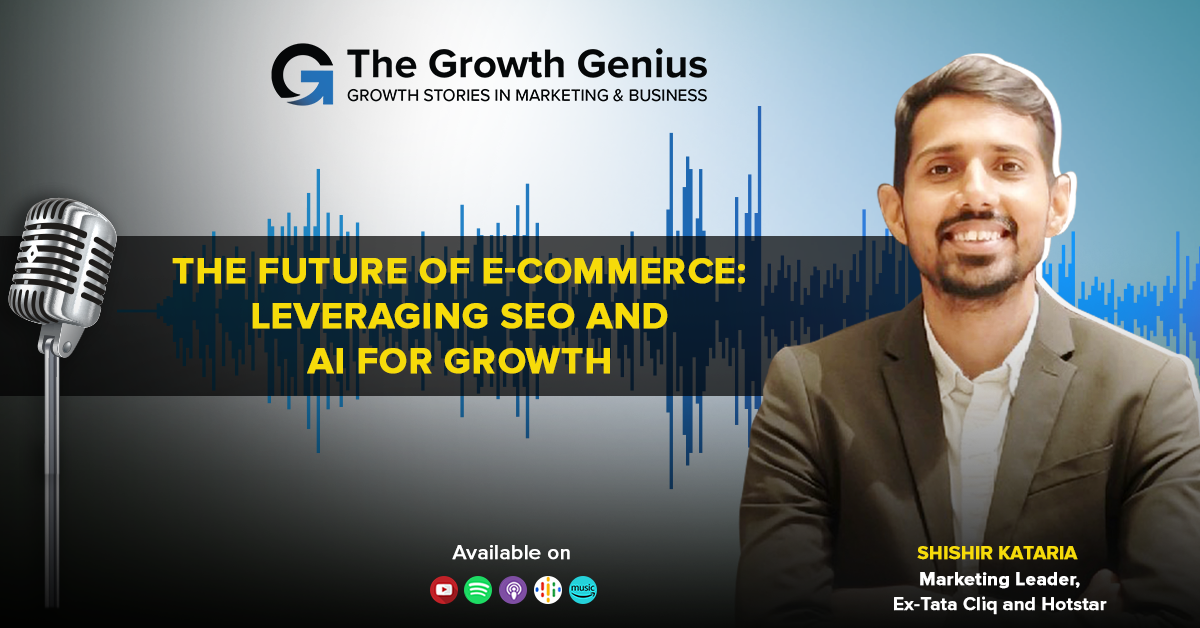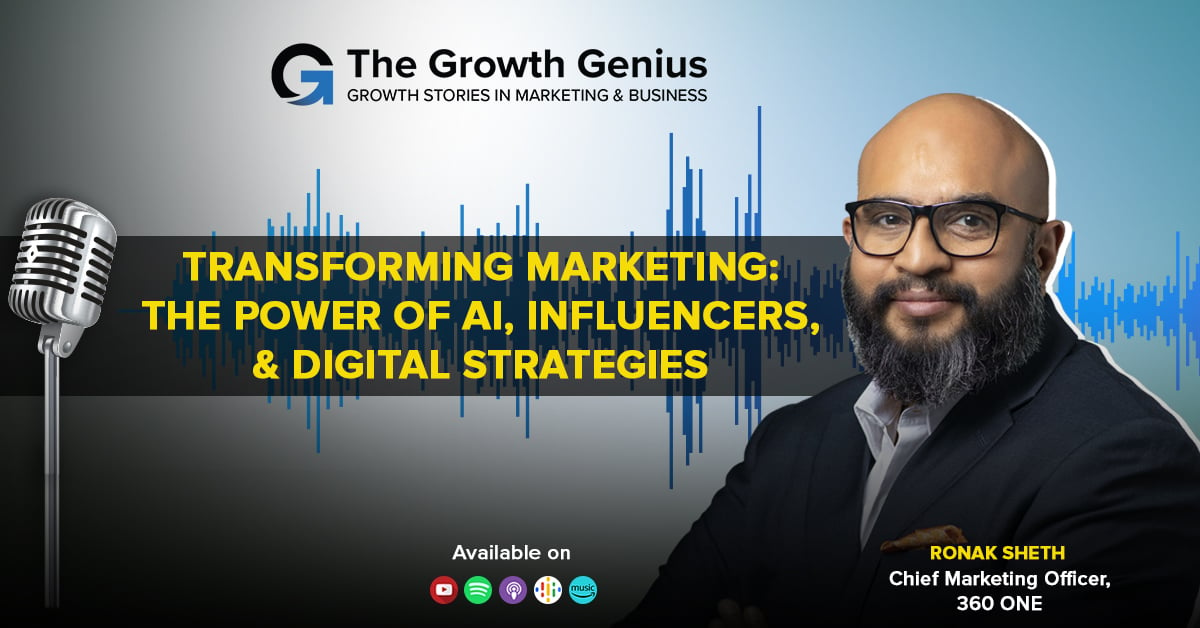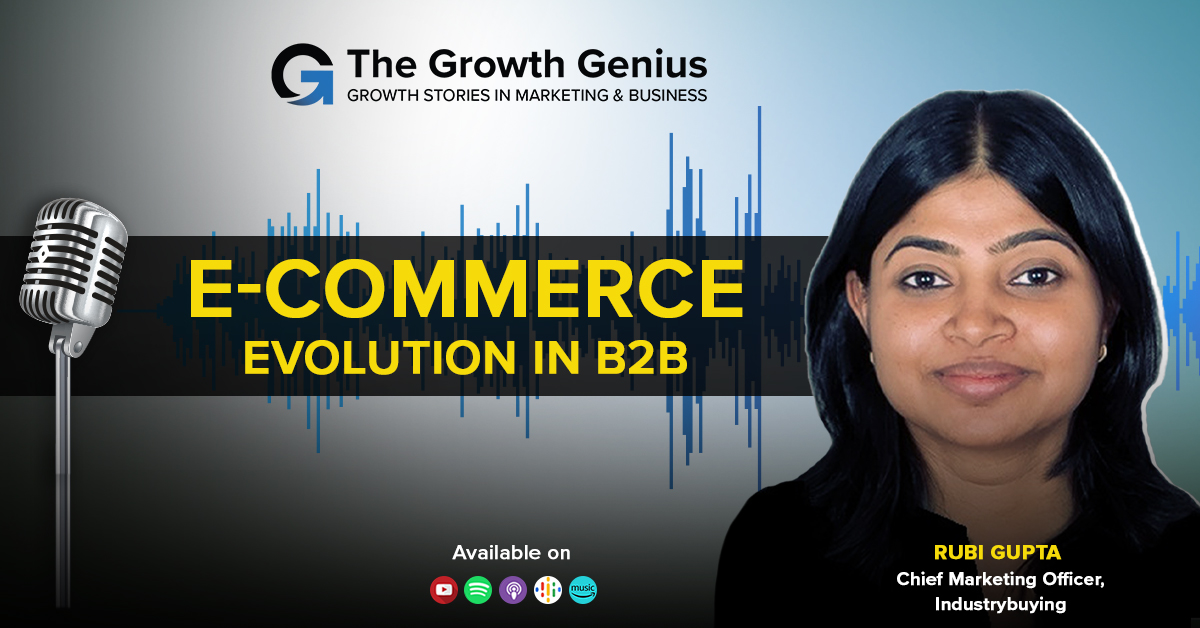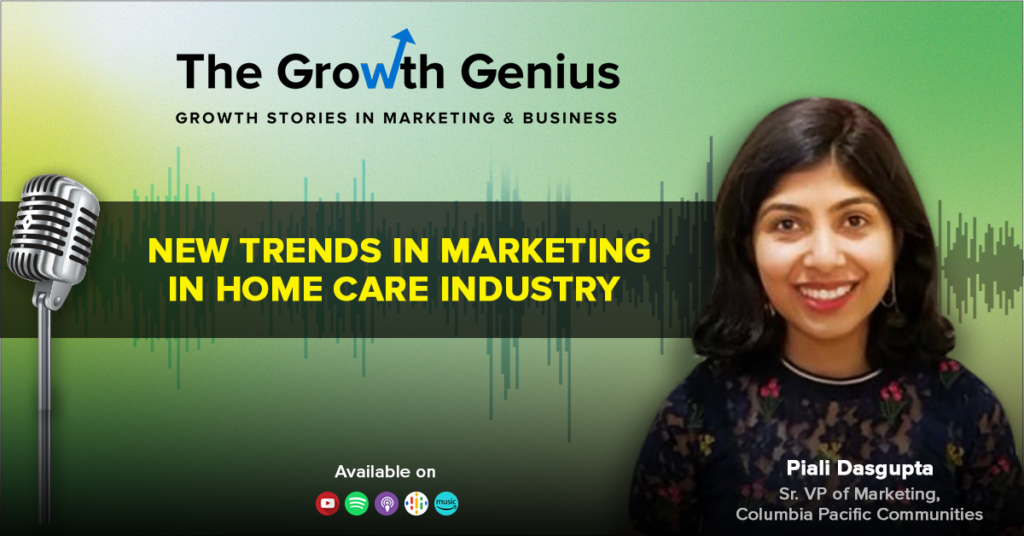Listen on your Podcast app
Summary
In this podcast episode, Piali Dasgupta, the Vice President of Marketing at Senior Living Properties, shares her insights on marketing strategies for senior living properties. She emphasizes the importance of understanding the target audience and their needs in order to create effective marketing campaigns. Piali discusses the challenges faced by the senior living industry and provides valuable tips on how to overcome them. She also highlights the significance of digital marketing and the role it plays in reaching and engaging with potential residents. With her expertise, Piali provides valuable advice on marketing senior living properties like a pro. Listen to the podcast to gain valuable insights and strategies for marketing senior living properties effectively.
Key Take Aways
- Understand the target audience: Digital marketers should have a deep understanding of the senior living market and the specific needs and preferences of the target audience.
- Create a strong online presence: Building a robust online presence through a well-designed website, engaging social media profiles, and informative content is crucial for attracting and engaging potential residents.
- Utilize search engine optimization (SEO): Implementing effective SEO strategies can help senior living properties rank higher in search engine results, increasing visibility and organic traffic.
- Leverage paid advertising: Digital marketers should consider investing in paid advertising campaigns, such as Google Ads or social media ads, to reach a wider audience and generate leads.
- Develop a content marketing strategy: Creating valuable and relevant content, such as blog posts, videos, or guides, can establish senior living properties as industry experts and build trust with potential residents.
- Implement email marketing campaigns: Utilizing email marketing campaigns can help nurture leads, provide valuable information, and keep potential residents engaged throughout their decision-making process.
- Utilize social media marketing: Engaging with potential residents through social media platforms like Facebook, Instagram, or LinkedIn can help build brand awareness, foster relationships, and generate leads.
- Monitor and analyze data: Digital marketers should regularly track and analyze data to measure the success of their marketing efforts, identify areas for improvement, and make data-driven decisions to optimize their strategies.
Read Transcript
Piyali Dasgupta:- Before COVID, I think digital was still something that many CMOs were looking at as, okay, a good to do, not sure, et cetera, a high engagement platform for them, and it is a preferred channel for them. I mean, COVID has been called the digital transformation. One must be a little patient with teaching their children how things work. I think we’ve all done that for our parents as well. If you know the channels that they’re present in, you can derive great value from that. And you have to look at adoption at scale. Today social media is what it is because it has been adopted at scale.
Kaushal Thakkar:- Welcome to The Growth Genius Show brought to you by Infidigit. I am Kaushal Thakkar, Founder of Infidigit and your Host for the show. As life expectancy increases, the world population slowly moves toward the golden years. Specifically, in countries like India, where joint families of 15-20 people were a norm a few decades back, we now see families of just two or three people. Youth is moving worldwide, and several older adults are staying alone. Thanks to initiatives like Columbia Pacific Communities that create independent senior living communities. We see hope in the eyes of these people in their golden age. Today we have a special guest with us. She’s a Senior Vice President of Marketing at Columbia Pacific Communities and my ex-colleague from Myntra. She has been honored with several awards and accolades, including the DMA Trailblazer CMO Awards and the Exchange4media 40 Under 40 Awards. She has also been an active speaker across various events and has been a jury for multiple awards. Let’s welcome Piali Dasgupta. Hi, Piali.
Piyali :- Thank you, Kaushal. Thank you so much. It’s a pleasure being here and interacting with you. We go back probably ten years or more.
Kaushal:- I think it’s 2013 if I’m not mistaken.
Piyali :- 2012…2012-2013
Kaushal:- That’s been quite…almost a decade. Nice to have you here, Piali. Piali, the title for the show is The Growth Genius, and you are one of the geniuses who has created growth for several organizations, specifically Columbia Pacific Communities; it is something close to my heart because of how you impact the lives of several people when they need help and support. So happy to have you here on this particular podcast.
Piyali :- Thank you so much, Kaushal. It’s entirely my pleasure. And I mean, I don’t know if I deserve to be called a genius, honestly, but…
Kaushal:- I think that you deserve it. So, Piali, when we met around ten years back, your role was more of an Associate Director for Fashion when you were at Myntra; when you are a marketing leader at Columbia Pacific Communities, I see that your role has completely transformed. At least, that’s what I feel. But it would help if you could share more about your current role with our audience.
Piyali: Yeah, I wouldn’t say it’s completely transformed. Ten years back, also, I was part of a marketing team, and now I lead a marketing team. So I think that’s changed. And obviously, the category has changed. I spent most of my career in fashion, and this is my first non-fashion stint. So in that sense, yes, I think there’s been a change in category, and that’s been very deliberate because I did want to get exposure to a category that was very different to fashion, had nothing to do with it, to see how relevant I would be in a very different kind of environment. And as far as my role here at Columbia Pacific Communities is concerned, well, I mean, the designation says Senior Vice President Marketing, but essentially what I do is lead the organization’s Marketing, Communication, and PR functions. I’ve been with them for a little over four years. I am a part of the founding team, and when I joined the organization four years back, there was no identity. Right? There was no brand. There was no identity. So it’s been a very interesting journey where one has had to create everything ground up and build a brand, the category, and the brand. Most importantly, we ensured that what we did was purposeful and touched many lives, directly or indirectly. Right? So, yeah, I mean, it’s been an interesting journey. Part of it is a growth journey, but part of it is also about, I think, understanding how the cultural shifts are happening in this country and across the world, of course, but also definitely in this country. And I think that to me it is fascinating. And how we play a part in that culture shift and the demographic shifts happening in the country, I think, makes this so much more important.
Kaushal:- That’s nice. And do you also have to interact a lot with the senior citizens or people in the golden age for your role? And how has the experience been so far?
Piyali:- Oh. Yeah, absolutely. They are our customers. They are the people that we exist for. And although marketing as a function is not necessarily that customer-facing, right? You have a sales and a CRM team that are far more customer-facing than marketing. But, yes, I’ve had, and my team has had, the great opportunity to interact with many of our senior residents across the nine communities we serve across India and South India. And it has been a wonderful experience because, just last night, I was talking to this 75-year-old man from one of our communities, and we’re bringing out this little book, which I’m not at liberty to talk about very much because it’s a work-in-progress project. But, I mean, every time you talk to a senior resident, there’s just so much life experience that you get to know about, right? They’ve already passed our age. They’ve had a journey that we have not embarked on. And so there’s just so much wisdom to gather from everything they say. There’s so much to learn and imbibe, and I think for me, as somebody who is, let’s say, could be called an older millennial. I am almost 40; I’m getting there. What fascinates me is all our seniors’ excitement, joy, and enthusiasm for life. I think they can beat us any day, hands down, regarding energy and excitement. And it’s just so heartening to see that because it tells you that age does not dim the sheer joy of living. Right? And I think that’s really what we are very fortunate to observe.
Kaushal:- Piali, you mentioned growth, and growth is one of the crucial factors when it comes to marketing. Would you like to share your favorite growth story with our audience? It could be from Columbia Pacific Communities or any earlier brands you have worked for.
Piyali:- Yeah, I think I will talk about my current role because it probably makes more sense. As I mentioned earlier, there was no Columbia Pacific brand or identity when I joined. So everything had to be sort of built ground up, including the brand identity, the brand architecture, the brand personality, and the brand ethos of positive aging. All of the entire brand pieces have to be worked on. And then, of course, the second part to that was the business piece, right, which was about putting together a business strategy, understanding how this business works, which is a very different niche business, how the sales cycles work here, how… what the consumer behavior is in a very new category that we are trying to build. And what I will say is that while we look at a year-on-year, month-on-month growth like any other company out there, I think for us, what has been the most heartening to see is the fact that we were the latest entrant in the category, the last brand to sort of enter the category. And although we are an international player with over 40 years of experience in senior living across the US, Canada, China, North Africa, and now India. But one does know about the challenges of a late entrance, right? When you don’t have the first mover advantage when you enter the category after everybody else has, you do have much catching up to do. And it was the same for us. And I’m very happy to share with you, Kaushal, that in the last four years, we are already ahead of all our competitors in terms of brand score, in terms of affinity, in terms of preference, in terms of all the sort of brand metrics that one sort of looks at. We are today as per even the latest research that we have done, the latest consumer research, we are today the most preferred senior living community operator in the country, despite being around only for four years. And you have to understand that there are players that have been around for 20 years, and there is a clear differentiation that we’ve been able to make in the market. It is because of how we have positioned and told our brand story. Well, as far as pure revenue numbers are concerned, I mean, if I look at last year’s numbers and this year’s, we’ve grown at about 30%, we’ve seen traffic to websites grow by about 78%, we’ve seen conversion rates grow by about 13%. So these are hopefully healthy numbers. I mean, I usually don’t like to talk about numbers because A sounds boastful and B because everybody else is… But the scale is also crucial, and… We’re not in that business at all because we’re not a tech-based startup. In that sense, we are a startup, but we’re not. So it is not about getting the first 100 million users because you can’t get 100 million users just like that in this category. But yes, I think to me, this is what growth entails. It’s about ensuring that we are the most preferred option for our consumers. It is about ensuring they demonstrate a clear preference for the brand over the rest and are also happy to pay a premium for our services and products. That, to me, is the result of brand building. Right?
Kaushal :- That’s good. And 30% is not a small number. Specifically, I understand the category in which you operate, and that’s why 30% is amazing. Nice of you, Piali. I would also like to understand that several celebrities, like Shah Rukh Khan and Zeenat Aman, are closely associated with Columbia Pacific Communities. How are these influencers and micro-influencers impacting brands these days?
Piyali:- So Shah Rukh Khan is not someone we’ve associated with. I’d love to because I’m a huge fan of his. So well, he’s not been somebody we’ve approached but yes, Zeenat Aman, for sure. We’ve had Boman Irani, and we’ve had Anupam Kher. Very recently, for our World Senior Citizens Day campaign that we launched in August this year, we also approached Mrs. Shabana Azmi. And for us, influencer marketing is important, but it is also something we look at differently. We are not a beauty brand that will engage with 300 influencers every month and sort of indiscriminately rope in influencers, whether they’re micro, macro, et cetera, because that is not the business we are in.
For us, influencer marketing is very, very strictly an awareness-building exercise, and it is a top-funnel exercise. Right? And by that, what I mean is that when we associate with people of a certain age group who have a certain kind of influence and affinity, well, influence over our demographic, which is the senior demographic, maybe because they are there of a similar age, maybe because there is a sense of nostalgia attached to their films. For example, suppose you look at people like Anupam Kher and Shabana Azmi. In that case, the older generation has a certain affinity towards these people because they’ve grown up watching their films. So it is about identifying people like that who are also great symbols of the brand ethos of positive aging by the way they have lived their lives. And it’s about identifying people that would be great ambassadors of the kind of lifestyle that we’re talking about. And as I said, it has a great resonance with our audience. So we’re very careful about the kind of people we associate with, and we don’t do it on a large scale, we don’t do it very frequently, so it’s not done on a monthly or a weekly basis. It is usually once a yearly kind of activity that we do. And as far as Mrs. Zeenat Aman is concerned, she was kind enough to come and launch our first signature project in Bangalore. I remember she was here for a press launch about three years back in 2019. It was wonderful working with her as well as everybody else.
Kaushal:- Some big influencers there to speak of, but thanks for that answer. And Piali, your target audience, since it is senior citizens who are not many times on digital marketing channels, are these influencers the best way to reach the target audience, or are there other ways you connect with this audience?
Piyali:- So I love this question because this is the most asked question, and I get asked a lot about how we reach out to seniors on digital platforms. And this is where I’d like to break many myths about seniors’ digital behavior. What we’ve noticed and what we’ve found over the last couple of years that we have been talking to them, marketing to them, et cetera, is that they are very digitally savvy, unlike what we think. They may not understand the metaverse entirely, but they’re all on Facebook and reachable on WhatsApp. WhatsApp is a very high engagement platform for them, and it is a preferred channel for them. They’re all very active on email. They all look at email as a source of information, et cetera. And some of them, interestingly, are also pretty active even on a channel like Instagram, which usually one wouldn’t associate with a senior cohort, right? So these are some of the myths that I sort of like to break because we found it far more effective to reach out to them on digital channels. Also, as a brand, we are a digital-first brand in terms of how we look at planning media. Of course, we do all of our offline activities – print ads, BTL activities, et cetera, et cetera, that every brand must do because it is a 360° endeavor. But digital, I think, for us has been the most rewarding channel so far. And when I say most rewarding, I don’t just mean from the point of view of revenue. Yes, it is the most rewarding, even in terms of revenue. It has seen the most optimized conversion rates. But even from a brand-building standpoint, most brand campaigns happen only digitally. With PR amplification, we do not do anything brand related offline. We’re not at a stage where we can afford that spending. We’ve identified influencers on Instagram with a massive fan base and senior influencers. We’re in touch with them, so it’s fascinating how they’ve adopted newer technologies, and obviously, they take from their children. One has to be a little patient with teaching them how things work. I mean, I think we’ve all done that for our parents as well, that we’ve taught them how to order stuff on Amazon, we’ve taught them how to order stuff on BigBasket. But once you teach them, most are pretty fast learners, and I think they’re living it up on social media, creating content, and seeing massive engagement on social media. So it’s been very joyful actually…
Kaushal:- I believe the adaptation would have increased considering the COVID situation, where they were kept a little away from the newspapers; the digital adaptation would have also increased.
Piyali:- Yes, of course. I think we saw a phase where newspapers were not being brought home because there were all kinds of theories about how that was spreading the virus as well.
Kaushal:- That nobody knows.
Piyali:- But digital adoption, I think, grew in general by 2-3x for all categories. And before COVID, I think digital was still something that many CMOs were looking at as, “okay, a good to do, not sure, et cetera,” but I think that sentiment completely changed. And COVID has been called the digital transformation agent of the country, right? So it was a stream for us as well.
Kaushal:- This would have impacted how your advertising budgets or the marketing budgets are spent across different channels, like, let’s say, television, vis-à-vis digital, et cetera. Has this also created any impact over there? COVID or general digital adaptation? Has it impacted the overall budget? How did you utilize it four years back, vis-à-vis now?
Piyali:- So Kaushal, I must say that from day one, our strategy was to be digital-first because we had enough data to understand that the consumer that we’re talking to, which is the urban senior citizen, affluent urban senior citizen because there is an affordability factor to the product that they are selling as well. Right? It is not a mass product. They are very much digital natives, right? Obviously, it is foolish to want to target them on TikTok, which is not in the country anymore. But if you know the channels that they’re present in, you can derive great value from that. And so, our strategy from day one was digital first. A because we had the information on their digital behavior. B purely because we didn’t have the massive budgets required for mass advertising, right? So it had to be more targeted niche advertising than mass advertising. And that’s how we grew and how we delivered results. I wouldn’t say that there was a massive shift in the ratios between how much we spent offline vis-à-vis how much we spent on digital post-COVID. But yes, I think through the severely impacted months of COVID, there was absolutely no offline activation at all. So 100% of our spending became digital, but now it has gotten back to about 70-30, which we have always maintained. Some of the channels that we do not necessarily use very much are TV. We have used TV and done TVCs in the past, but we have seen very low returns also because one has to understand that, ultimately, we come under the umbrella of real estate. And real estate usually doesn’t use TV because there’s a lot of waste and spillages. It just doesn’t make sense because real estate is very geo-focused. So TV may not do much. Out of home also, as a channel, we’ve done some activities. I wouldn’t call it a high-returns kind of channel. It is primarily a reminder medium, as everybody knows. So we have used it that way. But sometimes you have to take a call on whether this is making any sense ROI-wise. Right? So we’ve not had too many out-of-home activations in some time. BTL is something that we continue to do. Print is something that we focus on. And yeah, that’s pretty much, and obviously, all the channels in digital, including affiliate SEO, SEM, Facebook, and Google. So that’s pretty much what our mixes are…
Kaushal:- And Piali, content marketing plays a crucial role for all these channels you mentioned. So how do you drive content for a brand like Columbia Pacific Communities?
Piyali:- So I’ve come from a strong content background, right? I started my career in a publication and was in various content roles, including Myntra, Amazon, et cetera. So content, one, personally, content to me comes naturally. It’s not something that I struggle very much with in terms of understanding it and the role of content in business today. Two, we have always had a content-first approach, and we’ve had to. You know…if you look at the category we operate in and our brand. You can’t win this without content. And I’ll tell you why. We are operating in a category that is at a very nascent stage in India, right? The awareness of this category is very low. The adoption of this category, therefore, is also low. People have all sorts of misconceptions and all sorts of inhibitions about the category, and there is a tremendous amount of education that is needed, right? Education and awareness that we needed, which we do by building a robust content mechanism across channels. Now, whether that is blogs, SEO, whether that is the kind of content that we generate for PR to see to publications, whether that is our digital content on social media, whether that is the three largest campaigns that we do, the brand campaigns that we do, whether that is our print ad. It is ultimately about approaching this problem with a content-first stance. To us, there is no other way of doing this. We also realize we’re talking to a demographic with the time to consume this content. They don’t necessarily have the attention span of a goldfish. They have the time. They are more patient. Suppose you give them great content.
For example, we also do a monthly magazine called Tales that goes out to all our customers. It goes out to our entire database. It is also used as a CEM tool, right? And this is an out-and-out editorial product. There is nothing sales-y about this product at all. We don’t talk about our senior living communities; we don’t talk about the product at all. It is entirely editorial in nature. Celebrating seniors in their lives. And it is proven to be a great tool for us. This is something that people look forward to. It helps us engage better with our consumers. And so, for us, it is about content in different forms, looking at the various channels available to us, and curating content depending on what works for that channel, right?
Kaushal :- That helps. Now, specifically while content marketing and we spoke about the other channels, which are the present-day channels, what’s coming up now? There’s lots of talk going on in the marketing community about the metaverse. What are your views on the metaverse? Will it also impact initiatives like Columbia Pacific communities in the future?
Piyali: So I think it’s too premature to predict what the metaverse will do. It is the next big thing. There is no denying that. There is a whole bunch of lifestyle and, let’s say, fashion FMCG brands even in India today that have already jumped on the bandwagon. For example, we all know what boats have done very recently. We’ve seen some of the Tata brands do metaverse activation. We’ve seen Vans do metaverse, and they’ve all done it in their sort of unique way. My view on metaverse is that we have the headset at home, and I’ve fiddled around with it a little. My view is that for anything to gain momentum, it has to ultimately have scale, right? And you have to look at adoption at scale.
Today, social media is what it is because it has been adopted at scale across tier one, tier two, and tier three cities. It cuts through communities and languages. It’s become all-pervasive. Metaverse is a challenge in that sense because you would need the headset to access it. And the headset is expensive, let’s face it. Right? I’m sure the way things are moving, it is going to become a lot more accessible. It always starts with things not being accessible to the larger masses, and then it becomes something with a lot more mass appeal, right? So it is a journey. We have to understand that. I don’t think it will happen next year. I mean, many publications are now doing year-end stories and talking about whether metaverse will take over in ’23. I don’t think it’s going to happen that soon. But as I always say, whether it is metaverse, a print ad, an EDM, or whichever channel one has access to, I think it is about what you want to do with that channel, right? It is about a great idea you have that will flourish on that channel. So I think the idea is as important as the channel. We’ve seen a great print campaign. I know the world is divided about whether it is excellent, but I thought the Bournvita campaign was great, and it’s a print-activated campaign that is creating so much buzz on all digital platforms, right? So I think, ultimately, it’s about the power of the idea. Whether it is metaverse or print or whatever it is. And I think that’s my take on it. But I think that Web3, in general, and I think the transition that is now happening from Web2 to Web3 will open up a lot of doors for businesses, small and big. And it would be very interesting to be an observer of this change. Right? As far as Columbia Pacific Communities is concerned, we are always very open to doing new things, and experimenting, because we are a young company in that sense. But the audience that we have, at least the primary audience that we have, I do not know whether, at this point, it makes sense for us to have a metaverse strategy. For the secondary audience, which is the children of the senior citizens, and if we are looking to target them, it probably makes sense to look at metaverse for the primary audience, but maybe not.
Kaushal :- Thanks Piali, for that. And this would be the last question from my side. Imagine millions of people are watching you on this show; what is your message to these marketers and growth leaders?
Piyali:- My message is more generic and not necessarily to marketers. And the message is to work hard and focus on what ultimately matters: the work. And I’m saying this because often we get swayed by many things. We can get swayed by ego, by power, by various other things that may not, in the long run, make much of a difference. Ultimately, I think the work will speak for everybody, and the rest is just white noise. “How many followers do you have, and whether people like you or don’t like you.” I mean, that’s just for me; it’s just a lot of noise. And I think it doesn’t matter what the size of the business you’re handling, provided you are willing to make a difference in the lives of the consumers you’re touching. Right? So you can start small, ignore all the frills, not look at the latest trends, not spend huge amounts of money on advertising and create a buzz that will last for all five days and still create something significant. So I think I’ve always believed in a no-frills kind of attitude. It’s about focusing on the fundamentals and getting them right, particularly in marketing; I have to say it is about getting them right. It is about sweating the small stuff because God is in the details. And then we can all think of growth stories and chase numbers, which we have to do.
All of us have to do that. But are you getting the small things right? Are you getting your CX right? Are you getting the entire customer journey? Is that faultless, or are those fundamental details not taken care of right? And then you’re just chasing valuation. I see that happen a lot today. I’m no one to sit and judge this and say whether it is right or not. But I think, to me, I can only share with you what is important to me. And to me, what is important is sweating the small stuff because, in the long run, it works.
Kaushal:- Thanks for that wonderful message and this wonderful conversation. Love those ideas about God in small things; ideas are more important than the platform or the channels. So some great take away from you. Thanks a lot for this conversation. It was a pleasure having you on the show.
Piyali :- Thank you, Kaushal. It was wonderful being here and chatting with you after so long. I enjoyed this conversation because of some great questions from you, and I hope it adds a little value to whoever has decided to spend some time watching this or listening to it. I think if it does, I’d be more than happy. Thank you again for this opportunity and for inviting me.
Kaushal :- Thank you, Piali. See you. Bye. Thank you so much for joining us on this episode of The Growth Genius. I hope you learned more about growth and marketing from Piali. If you did, SUBSCRIBE to this channel and share this episode or continue this conversation by adding your comments on YouTube. Thank you. Now go out there and create growth for yourself and your organization.

Popular Searches
How useful was this post?
0 / 5. 0











